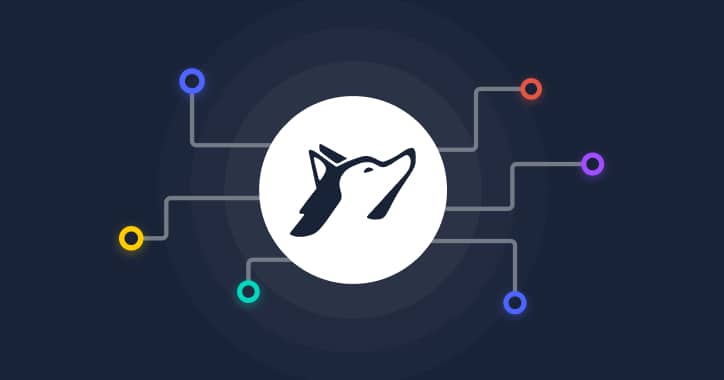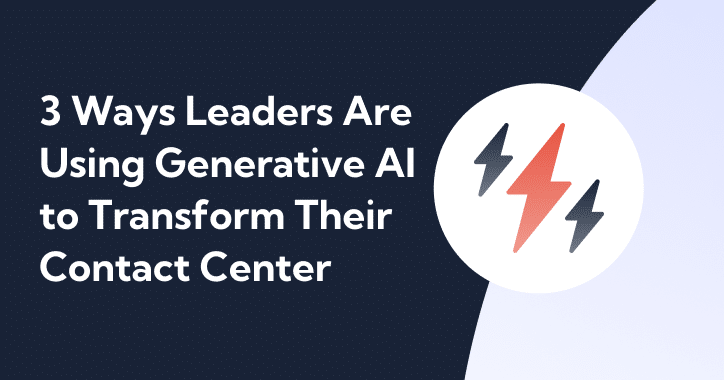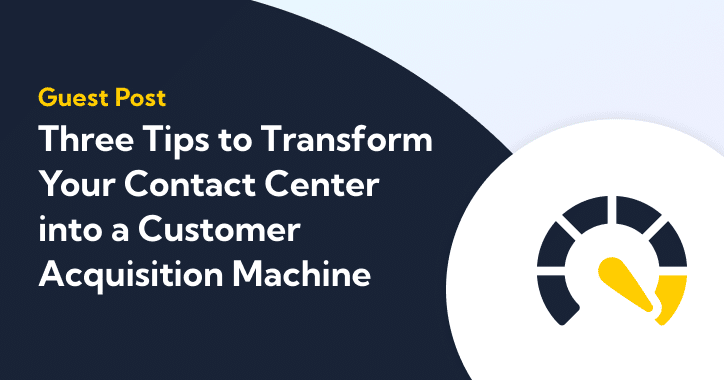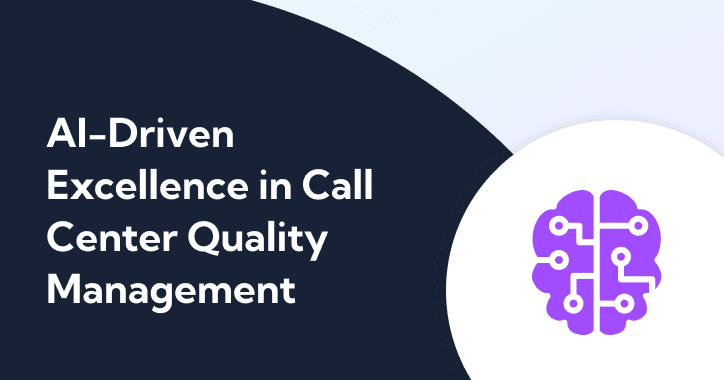The call center industry has evolved dramatically in recent years, particularly with pretty incredible advancements in call center technology.
From utilizing cloud call centers to self-service channels and the rise of AI software, a contact center is no longer a remote office with a few business phone lines.
Customers nowadays have a set standard of expectations when they need to seek support or contact your sales team. Not being on par with these expectations results in lost opportunities and loss of market share to competitors.
Adopting key call center technologies will not only improve customer experience and boost conversions but also maximize the performance of your agents.
How Has Call Center Technology Changed Over the Years?
Now, let’s take a look at the evolution of call center technology from its earliest days till now.

A Brief History of Call Center Technology
Call centers data back to 1957 in New Jersey, when Time Inc. managed to boost sales of LIFE magazine with a call center based in the same state. The idea of a company using the phone to sell products and services, and turn that into a viable business, started spreading shortly thereafter. But, since phone lines were expensive, very few companies adopted the idea.
Later, a new invention called the Private Branch Exchange (PBX) allowed companies to create call centers by making telephone connectivity available through call channeling in a single office with multiple business phone numbers. This newfound capability caught fire and call center businesses started popping up across the country.
But calls conducted outside of a company’s local area were pretty costly. Not to mention, the technological potential of relying on a local phone system provider was quite limited. As a result, companies started looking for alternate, less costly ways to reach their customers.
Today’s Omnichannel Solutions
Omnichannel call centers have become the norm in recent years. In this day and age, customers expect to receive support from multiple channels, not just through phone lines.
An omnichannel solution may include some or all of the following support channels:
- Phone
- Contact forms
- SMS
- Support tickets
- Social media
- Live chat
It’s worth noting that these channels aren’t entirely independent. In fact, most conversations are synced across multiple channels, enabling agents and customers to pick up where they left off in case the conversation was moved from one channel to another for some reason.
This level of continuity also comes in handy when another employee needs to follow up with the customer. With a full conversation history, the customer doesn’t have to repeat themselves (ideally).
Rise of Call Center Analytics and Reporting
With so much omnichannel inbound data available from customer interactions, it’s become critical for contact centers to use that data to keep a leg up on competitors.
Data analytics and reporting can play a key role in improving customer experience and call center performance. The more data you have from your customers and agents, the easier it is to make better, informed decisions.
There are many ways analytics and reporting can support call center managers and agents.
Interaction-based analytics provide you with a broad overview of the demand on each support channel. So, if you know the average call volume per day, you’ll be able to manage workflows more effectively.
Additionally, knowing the average call volume on a per-hour basis can make it easier for your agents to manage demand more efficiently, resulting in reduced wait times and improved productivity.
Website analytics tools provide you with insights into the customer journey. By learning how your customers interact with your website and at what stage they tend to request support more frequently, your agents will be able to proactively support the customers, drastically improving the overall customer experience.
Modern Call Center Technology
In recent years, an explosion of new call center software options has revolutionized the industry.
Speech Analytics
Speech analytics is the use of speech recognition and text analysis, in combination with pattern spotting, to provide insights into how customers interact with your business. Speech analytics software records and reviews customer conversations and automatically translates them into language that can be read by a computer.
Integrating speech analytics into your tool arsenal will help you detect performance inefficiencies and problems with customer interactions. Moreover, you’ll be able to identify unwanted patterns, like silent patches, emotional speech, and frequent hold times.
Predictive Analytics
Predictive analytics takes conversation analytics a step further by analyzing aggregate call data to project into the future.
Predictive analytics heavily relies on historical data, so the more data you have, the more accurate your predictive models will be.
Predictive analytics can also be very useful around specific holidays or seasons. For example, developing a predictive model based on key data from last Valentine’s Day can help you estimate the demand for this Valentine’s Day, enabling you to manage your resources more effectively.
The data analyzed includes key contact center KPIs including service level, call volume, customer satisfaction, first-call resolution rate, handling time, and waiting time.
Emerging Trends in Call Center Technology

Here’s an extensive overview of trending call center technology and how it can affect your agents, customers, and call center.
Customer Routing
Customer routing is directing your customer to the right agent. It sets a path for your customer to follow depending on the purpose of the call.
Customer routing relies on preset strategies and criteria. There are two technologies that can help you optimize your customer routing: Automatic Call Distributor (ACD) and Interactive Voice Response (IVR).
The purpose of ACD is to ensure that your customers never have to repeat themselves to multiple agents because they’re unable to find a suitable agent to handle their problem, resulting in an endless call transfer loop.
With ACD, each customer will be routed to an agent that can almost certainly handle their query without having to transfer the call to another agent. The key is to optimize your routing strategies to make sure the workload is equally divided among your employees.
IVR systems comprise solving customer inquiries with automated voice responses. This technology can drastically ease the pressure on your contact center and improve customer experience.
Ideally, your IVR system should be capable of resolving the most common customer inquiries, so that agents handle the more complex customer interactions.
AI Integrated Into Daily Tasks
AI solutions have tons of benefits for call centers, especially if you integrate them into daily tasks and workflows. Some call center managers think that AI is meant to replace human call center agents, but that’s far from true. AI technology, at least in its current state, isn’t capable of fully compensating for the absence of humans.
The goal here is to provide assistance for your call center agents to do their jobs more effectively and take some work off their plates, rather than fully replacing them. Various AI call center technology trends are now capable of simplifying lead generation and sales processes. For example, AI chatbots are designed to handle simple and straightforward customer inquiries, and when that isn’t possible, the chatbot routes the customer to the most qualified agent to handle their request.
AI can also take care of redundant tasks, such as call recording and sharing pre-recorded messages.
When combined with machine learning, the performance of your AI solutions will improve with time as these solutions continuously “learn”. The more data you have, the further you’ll be able to reap the benefits of your AI solutions.
AI software is capable of boosting your first call resolution rate by routing the customer to the most suitable agent. What’s more, you can leverage AI speech recognition and natural language processing (NLP) to resolve customer inquiries without the need for direct interaction with a customer service agent.
AI-enabled machine learning systems can identify the customer’s problem and provide the best matching solution or transfer the call automatically if required. More advanced tools are also capable of evaluating the customer’s speech for things like tone and pitch.
AI-powered conversation intelligence (CI) software improves employee performance by providing agents with quick responses in real-time during phone calls. CI tools can also assess the quality of an agent’s call by detecting the frequency of non-value-adding words (like um, well, maybe, etc.).
Another type of AI software is virtual assistants. These AI assistants can send account updates, make it easier for customers to schedule appointments, and collect payment details.
Self-Service Customer Service
Implementing self-service customer service channels can be beneficial for businesses and customers alike. For businesses, self-service channels can significantly ease the burden on contact center agents and help them be more productive.
By allowing customers to help themselves through online FAQ pages, knowledge bases, and AI chatbots, you can reduce call volume and lower the demand on your call center.
For customers, self-service channels help them find the answer to their problems faster. Many customers love finding the solution to their problems online rather than having to call a customer service representative and potentially wait in a virtual queue.
Cloud and Remote Centers
Cloud and remote contact centers have become more common in recent years. They present various advantages that include reduced administrative and overhead costs, more flexibility for agents, and a larger talent pool from countries all over the world.
Effectively operating a work-from-home call center comes with a variety of technical requirements. Ideally, a cloud call center infrastructure should also include a mobile app and VoIP capability. This allows agents to handle customers even if they don’t have access to their computers.
Text Analysis
Text analysis has become an integral part of the modern contact center. It makes collecting actionable insights more efficient.
AI-powered software derives key insights from communication channels, such as support tickets, emails, transcripts, and customer surveys. Its primary functions include:
- Capturing relevant keywords and phrases
- Analyzing text with advanced filtering and extraction
- Making text readable for AI tools
- Identifying the distinction between positive and negative sentiment with sentiment analysis
- Spotting patterns and trends related to customer behavior
- Understanding the customer’s intent
Quality Assurance Technology
QA technology allows you to keep track of agent performance, customer experience, and operational efficiency. Implementing QA technology can also determine the effectiveness of your onboarding/training programs and whether your contact center software aligns with your organization’s goals.
Utilizing QA technology can help you:
- Boost sales
- Engage your agents
- Tailor better training programs
- Minimize customer churn rate
- Reduce agent turnover
What’s more, QA solutions make it easier for you to track vital KPIs, giving you deeper, real-time insight into the customer experience and the overall efficiency of your call center team.
Security and Data Privacy
Maintaining the security and data privacy of your customers can be really challenging. With increased reliance on cloud-based contact center services, they’ve become a popular target for hackers. Not to mention, there are internal risks as well, such as data breaches or agents failing to comply with regulations.
Failing to meet the security and data privacy expectations of your customers can cost your organization a lot of money. It’ll also damage your company’s reputation, which will eventually make you lose your customers’ trust.
Your best bet is to opt for advanced call center technologies that focus on customer data privacy and security. These include:
- CRM (Customer Relationship Management) software to manage customer data
- QA scorecards to ensure compliance marks are met
- Call recording software to QA calls
These advanced call center systems help you maintain an audit trail, both for your IT department and regulators.

Take Your Contact Center to the Next Level With Balto
Leveraging technologies in your call center can help you reach new levels of workforce performance, improve customer support, and drive revenue.
With Balto, unite your workforce with contact center AI that empowers them both during and after calls — resulting in transformative contact center growth. Guide your agents to say the right thing on calls, access analytics derived from your customers’ interactions for future improvement, and ramp up teams faster than ever before.
We’re excited to offer you a free demo of our solutions to learn how they can improve your call center’s efficiency and customer satisfaction levels. You might also want to check out some of our recent client case studies to learn more about how the technology works and what it can do for your organization.






